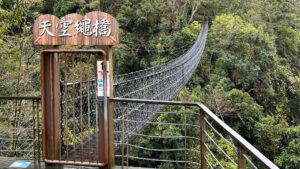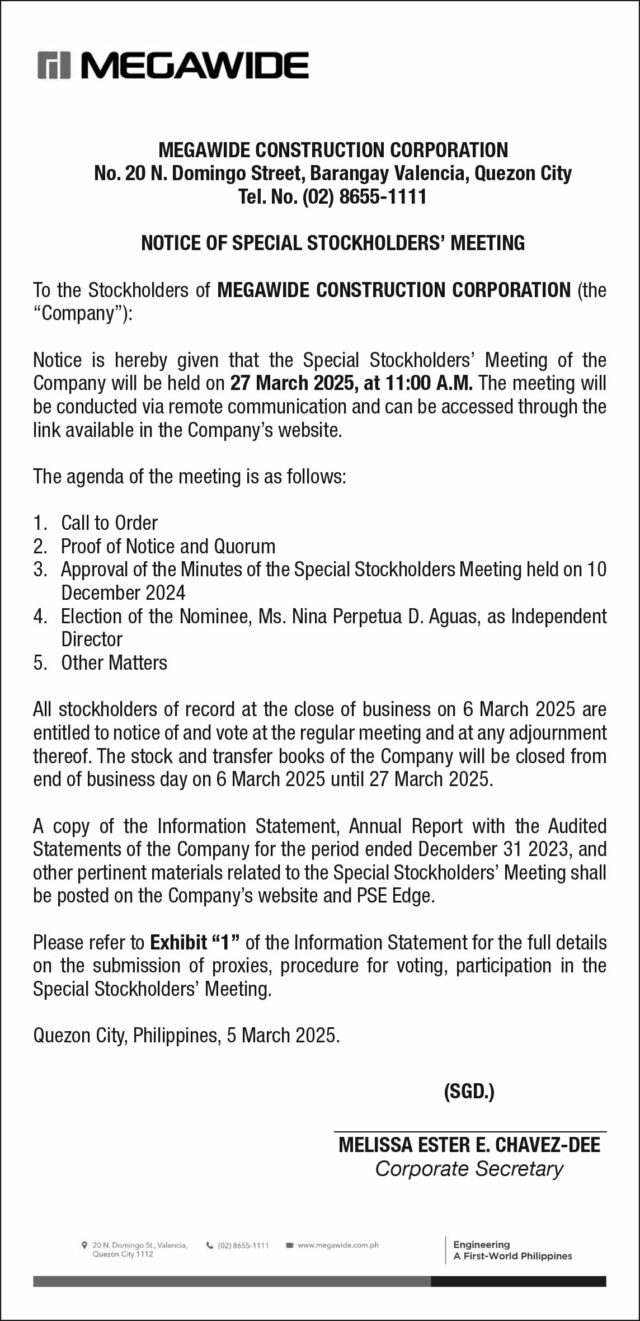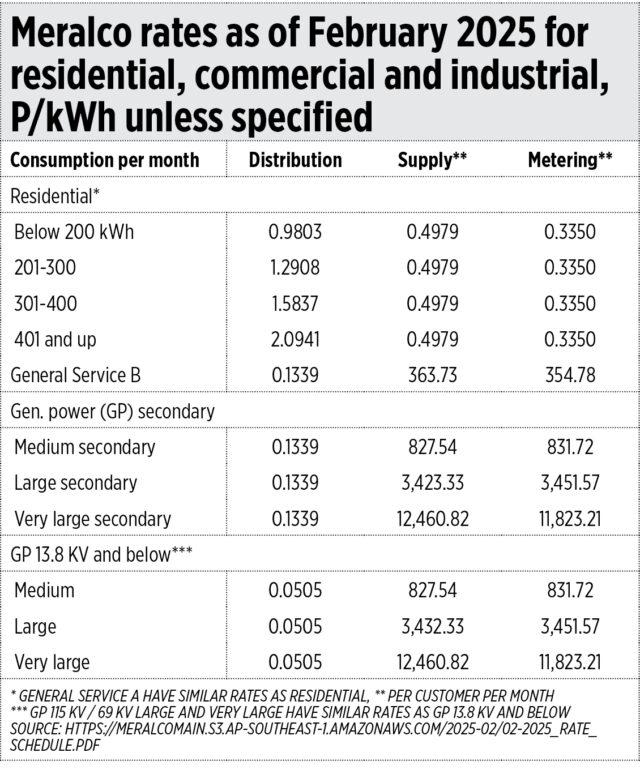Taiwan is not just Taipei (though it is not a bad place to start a visit)

For the record, there is more to Taiwan than Taipei.
The Taiwan Tourism Administration (TTA) wants international visitors, including Filipinos, to explore cities beyond Taipei to experience the country’s culture, history, nature, and cuisine in a showcase of Taiwan’s charm.
“We want to see more Filipino visitors to Taiwan in addition to a higher percentage of repeat visitors,” the TTA said in an email interview.

Taiwan’s tourism brand, Waves of Wonder, was launched in May 2024 to promote the scenic spots around the country. Its logo mimics the contours of mountains, ocean waves, winding roads, and historical railways, highlighting that the self-ruled island has plenty to offer aside from the bustling city of Taipei.
With this branding, the TTA aims to invite visitors to their country to “enjoy the mountains, embrace the sea, and explore the island.”
BusinessWorld, together with six representatives of the Philippine media, visited Taiwan from February 11 to 16 at the behest of the TTA for a familiarization trip around Taoyuan City, Miaoli County, and Hsinchu County to see and experience the “Waves of Wonder” the country has to offer.
Historical and cultural spots

The Filipino press group went to the “Lost Army” museum in Zhongzheng New Village, Taoyuan City, opened in 2022 by Simon Wang, one of the soldiers who fought in the Chinese Civil War.
“They don’t know about these people, these soldiers that died in the battle, they sacrificed their lives, and no one [remembers],” Mr. Wang told reporters.
Historical materials such as old documents, fake guns, uniforms, grenades, and even “mission cards” that reveal a message once heated are displayed inside.

Along with the war memorabilia, the museum has different areas narrating the trauma experienced by soldiers, how soldiers used opium during the war, and other traditional clothing.
Mr. Wang said that he wanted to establish a story house to commemorate, remember, and let the people know about his fellow soldiers in the Lost Army.
Almost an hour from Taoyuan City lies Jinliangxing Brick Factory, another valuable place in Miaoli County that holds a significant part in the history and culture of Taiwan, particularly in its architecture and construction.

Before concrete became widely used globally, Taiwan built houses and structures with red bricks. The bricks manufactured by Jinliangxing have made 100-year-old churches and other establishments, Sem Yie, owner of the brick factory, said.

With the lowering demands as time passed, the factory opened a small museum showcasing the history of bricks and carved artworks. Mr. Yie said by doing so, he hopes to preserve the history and culture of traditional Taiwanese architecture.
Tours exploring the interior and exterior of an old kiln are also open to visitors.
“I am trying to introduce this bricks culture to the new generation,” Mr. Yie said.
Longteng Bridge is one of the notable structures made from Jinliangxing bricks. Although it got damaged by the deadly 1935 Shinchiku-Taichū earthquake, its foundation stood still and is now a tourist spot in Miaoli County.

Through Taiwan’s first mountain-town rail biking system, the Old Mountain Line Rail Bike, tourists can see the remains of the historical bridge while driving an electric bike on a century-old railway.
Visual displays and colorful lights lit up the tunnels the electric bike will pass through, making the experience more unique.
Connecting with nature
For vacationers seeking nature trips, Taiwan is one of the best places to visit. Surrounded by waters and mountainous terrain, breathtaking nature-filled spots are endless.
Located in Fuxing District in Taoyuan City, Xiaowulai Skywalk offers fresh air and scenic views of the mountains, forest, and falls.

Although it was raining when the media group visited the area, the beauty and serenity of the place still shined through. A glass platform view deck overlooking Xiao Wulai waterfall allows visitors to feel like they are “walking on clouds”, hence the name skywalk.
Apart from the skywalk, vibrant cherry blossom trees can be spotted around the area from late January to mid-April. This enhances its visual appeal, making it look like a mini-Japan.


Animals are also well-loved in Taiwan. In fact, Leofoo Resort Guanshi in Hsinchu County is Asia’s first resort with herbivorous animals and natural ecology incorporated into its design inspirations.
Capybaras, flamingos, and meerkats can be seen through the big windows inside the 161 rooms available in the hotel, allowing vacationers to have a close-up look at the adorable animals.
If this is not enough, Leofoo Village Theme Park also offers an African safari experience where visitors can ride a bus driving around different habitats of wild animals such as white tigers and lions.
Flavors of Taiwan
Visiting places is not the only way to learn more about a country. A traveler’s stomach must be full, together with his eyes and mind.

After exploring the countryside, the media group had the opportunity to indulge in one of the staples in Taiwanese cuisine – authentic beef rice noodles, from different local restaurants like Jin Bang Noodles Shop in Sanyi Township, Bebu Chun Jiao Noodles near Beipu Old Street, and Duan Chunzhen Beef Noodles in Hsinchu County.

A distinct flavor evident in their staples, like beef noodle soup, is the five-spice powder. The five-spice powder is composed of star anise, cloves, Chinese cinnamon, Sichuan pepper, and fennel seeds.
Unlike the typical Filipino cuisine bursting with bold and rich flavors, beef rice noodles in Taiwan tasted light yet filling. The thick rice noodles complement the subtle flavors of the soup paired with the tender beef.
If one wants to be more adventurous, exploring Beipu Old Street is an easy fix for anyone who likes to expand their taste palette. Ranging from dried fruits to the popular stinky tofu, this street in Hsinchu County is the answer to all the foodie travelers.
While exploring the island, it further highlighted a few similarities with the Filipino culture and history – from closely knit families and being colonized to ‘Popiah’ or Lumpia, it is like a “home” away from home.
Last year, the Philippines became Taiwan’s fifth largest source of inbound tourists. The once-known ‘Heart of Asia’ has exceeded far beyond just a neighbor; it has captured and found a place close to the hearts of Filipinos.





![John-Paul-Ang-[philippine-star-file-photo]](https://www.bworldonline.com/wp-content/uploads/2025/03/John-Paul-Ang-philippine-star-file-photo-640x428.jpg)

![life insurance [freepik]](https://www.bworldonline.com/wp-content/uploads/2025/03/life-insurance-freepik-640x427.jpg)













